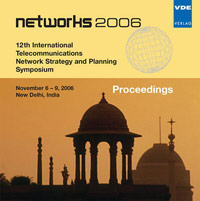Using NGOSS Principles in todays OSS/BSS Projects NGOSS meets IMS/SDP
Konferenz: networks 2006 - 12th International Telecommunications Network Strategy and Planning - Symposium
06.11.2006 - 09.11.2006 in New Delhi, India
Tagungsband: networks 2006
Seiten: 8Sprache: EnglischTyp: PDF
Persönliche VDE-Mitglieder erhalten auf diesen Artikel 10% Rabatt
Autoren:
Goestl, Herbert (T-Systems International GmbH, Germany)
Inhalt:
The IP Multimedia Sub-System (IMS) including the Service Delivery Platform (SDP) architectures on the one hand and the Operation- or Business Support Systems (OSS/BSS) on the other hand represent the result of efforts by standard bodies and the telecommunication – or information technology industry. New so-called third generation (3G) or triple play services can be delivered to the market by means of using these architectures as well as respective IT support systems. Furthermore, various market players, stakeholders or alliances will come up at the telecommunications arena. The paper will systematically consider all these subject matters and elaborate that the use of New Generation Systems and Software (NGOSS) principles will leverage the OSS/BSS as well as IMS/SDP promise. In other words, to provide efficiently IMS/SDP based services requires an “IMS/SDP ready” OSS/BSS. There will be lots of well-known as well as quite a few new features to be provided by such an OSS/BSS. One example is that an “IMS/SDP ready” OSS/BSS does not only provide all the existing services very quickly, it must also be able to support the design and creation of new types of services including new types of network/IT resources which allow these new kinds of services at all. This will impact the whole IMS/SDP as well as OSS/BSS environment, beginning with the Service Creation Environment (SCE) up to the extension of the Inventory Management System as the heart of the operational processes. However, the use of such an OSS/BSS in concert with the IMS/SDP will play a key role in allowing the operator or service provider to reduce Operational Expenditure while at the same time, delivering the efficiencies needed to speed up both the service- and infrastructure provisioning processes. A system integrator‘s potential contribution in concert with state-of-the-art IT architectures such as Enterprise Application Integration (EAI), Service Oriented Architectures (SOA) and Workflow Management in delivering a project driven solution are also described by this paper.


